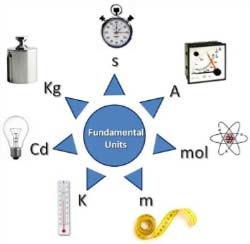Faraday’s laws of electrolysis describe the quantitative relationship between the amount of substance produced or consumed during electrolysis and the amount of electric charge passed through an electrolyte. These laws were formulated by the English scientist Michael Faraday in the 1830s and are fundamental principles in electrochemistry.
Faraday’s First Law: The amount of a substance produced or consumed during electrolysis is directly proportional to the quantity of electric charge passing through the electrolyte.
Mathematically, this can be expressed as:
m = ZQ
where:
- m is the mass of the substance produced or consumed (in grams),
- Z is the electrochemical equivalent, which is a constant specific to the substance being electrolyzed and represents the amount of substance produced or consumed per unit charge (in grams per coulomb),
- Q is the total electric charge passed through the electrolyte (in coulombs).
Faraday’s Second Law: The masses of different substances produced or consumed during electrolysis are directly proportional to their respective chemical equivalent weights.
Mathematically, this can be expressed as:
m₁/m₂ = E₁/E₂
where:
- m₁ and m₂ are the masses of two different substances produced or consumed,
- E₁ and E₂ are their respective chemical equivalent weights.
The chemical equivalent weight of a substance is defined as the mass of the substance that reacts with or is produced by one mole of electrons during electrolysis.
These laws provide a basis for calculating the amount of substance produced or consumed during electrolysis based on the quantity of electric charge passed through the system. They are important in various electrochemical applications, such as electroplating, electrolytic refining, and the production of various chemical compounds through electrolysis.
What is the Importance of Faradays Laws for electrolysis
Faraday’s laws of electrolysis are of great importance in understanding and predicting the behavior of electrolytic cells. Here are some key reasons why Faraday’s laws are significant:
- Quantitative Relationship: Faraday’s laws establish a quantitative relationship between the amount of substance produced or consumed during electrolysis and the amount of electric charge passed through the electrolyte. This relationship allows for precise calculations and predictions in electrochemical processes.
- Conservation of Mass: Faraday’s laws uphold the principle of conservation of mass. They ensure that the total mass of substances produced at the electrodes is equal to the total mass of substances consumed, providing a fundamental understanding of the stoichiometry of chemical reactions occurring in electrolysis.
- Electroplating and Electrorefining: Faraday’s laws are crucial in electroplating processes, where a metal coating is deposited onto an object. The laws allow for the calculation of the amount of metal deposited based on the quantity of charge passed through the electrolyte, enabling precise control of the plating process. Similarly, in electrorefining, Faraday’s laws help determine the purity and quantity of metal obtained during the refining of impure metals.
- Industrial Electrolysis: Faraday’s laws play a vital role in various industrial electrolysis processes. For example, in the production of chemicals such as chlorine, hydrogen, and sodium hydroxide through the electrolysis of brine (saltwater), the laws provide insights into the efficiency and yield of the process. They also guide the design and optimization of electrolytic cells used in industrial applications.
- Fundamental Understanding: Faraday’s laws contribute to our understanding of the behavior of ions, electrons, and electric current in electrolytic cells. They provide a theoretical framework for studying and analyzing electrochemical reactions, helping scientists and researchers develop new technologies and advancements in the field of electrochemistry.
Overall, Faraday’s laws are fundamental principles that underpin electrochemical processes. They provide a quantitative relationship between electric charge and the production or consumption of substances during electrolysis, facilitating accurate calculations, practical applications, and a deeper understanding of electrochemical phenomena.




